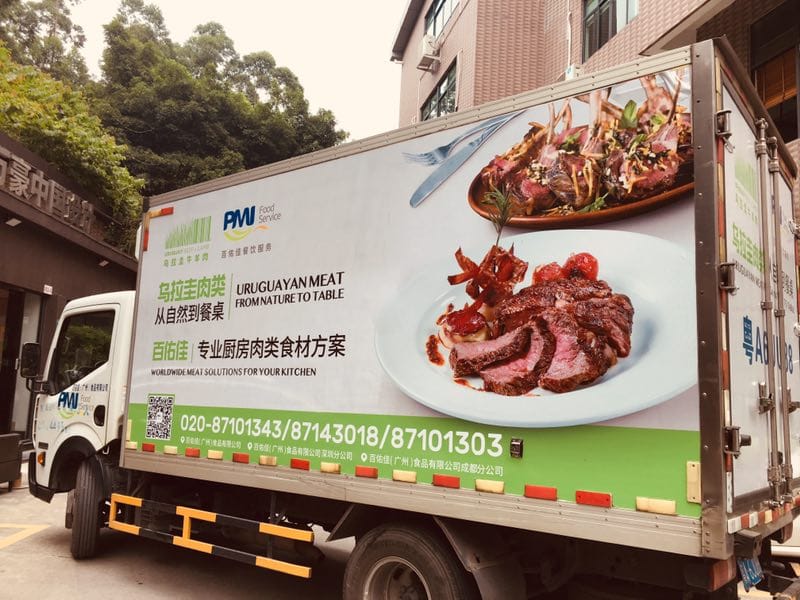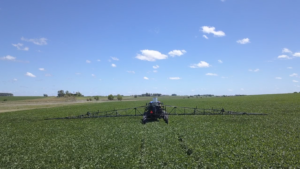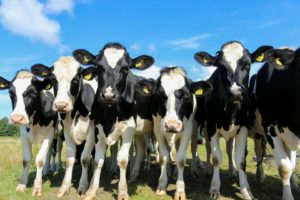Raised in the open air, free from hormones and antibiotics, Uruguayan beef holds an esteemed place in the minds of Chinese consumers, aided in no small part by a strong government marketing push and a closer political relationship between the two countries.
11.5million
the number of cows in Uruguay
Today, 22% of China’s beef imports come from Uruguay, where cows outnumber its 3 million citizens by almost 4 to 1. The country’s 9.5 million hectares of pasture dedicated to beef production occupy 80% of its territory. Each animal roams in an area equivalent to two football pitches.
Of the 600,000 tonnes of beef produced annually, 70% is destined for export. China is the main destination, accounting for 56% of all exports. The figure is increasing sharply. So far this year, shipments to China are up 42% compared to 2018.
“Uruguay is very well positioned in sanitary terms and has managed to build an image as a quality meat exporter,” said Ignacio Bartesaghi, director of international business studies at Uruguay’s Catholic University.
Beef culture
Beef is a big part of Uruguay’s national economy and identity. Per capita, Uruguayans eat more beef than any other nation. The country has 44,000 livestock facilities, most of which are family-run and rear traditional breeds including Hereford and Aberdeen Angus.
“There are no large cattle ranches. That means the distance the animal has to travel to consume water is short,” said Victor Tonelli, a livestock specialist, referring to the country’s ‘grazing gradient’, changes in vegetation that occur relative to cattle’s distance from water, which indicate land degradation. Overgrazing is common near watering points on big farms.
“Having mostly pastures instead of feedlots [also] favours a reduction of emissions,” he added.
Scarcely 10% of beef production in Uruguay takes place in feedlots, energy-intensive closed stalls for fattening cattle on mass-produced grains. The overwhelming majority of cows roam in the open and feed on grass, which lowers the carbon footprint because grass converts carbon dioxide (CO2) into oxygen.
We have huge stores of biodiversity, which livestock has lived with and conserved for centuries
The use of manure as fertilizer also involves lesser impacts than using chemicals such as nitrogen.
Agriculture is responsible for around 75% of Uruguay’s greenhouse gas emissions, with methane emitted by ruminating cows responsible for over half that share, according to the UN’s Food and Agriculture Organisation.
Beef production has remained in Uruguay since 2004 and has a mandatory traceability system, which assigns an identification code to each animal, letting you know its location on the production chain in real time.
400
the approximate number of grass species in Uruguay's grasslands
Unlike neighbouring Latin American countries Brazil and Argentina, Uruguay does not have native forests, so the expansion of livestock has not caused deforestation. Cows coexist with a grassland ecosystem that consists of over 400 grass species.
“We have huge stores of biodiversity, which livestock has lived with and conserved for centuries,” said Lautaro Pérez, marketing manager of the National Beef Institute of Uruguay (INAC).
In order to conserve natural resources, Uruguay’s Ministry of Agriculture and Livestock also introduced land use and water care management plans, along with incentives for sustainable rearing practices.
These form part of Uruguay’s commitment to cut the sector’s ‘emissions intensity’, the amount of gasses emitted per kilogram of meat, by up to 46% by 2030.
The government is currently working with producers to implement better management practices of pastures, some of which are degraded and could be capturing more CO2. A pilot program with 60 producers in 400,000 hectares is currently underway.
Public and private agencies are also encouraging the expansion of silvopastoral systems, which combine forestry and ranching. Uruguay has seen an expansion of forested area, from 100,000 hectares to the current one million. The wood is used to manufacture cellulose pulp.
Beefed-up marketing
Given China’s importance as a buyer, INAC pushed to improve the image of Uruguayan beef there through a series of marketing campaigns targeted at importers and consumers. Most sales are made on the internet, where the institute focuses its efforts.
Aside from meat, Chinese consumers’ exposure to Uruguayan products is still very low, meaning that brand-building is essential, according to INAC.
“Little by little, the country and its beef are becoming known. Chinese consumers are looking for healthy and innovative products and the response they have given to Uruguayan meat has been extraordinarily positive,” Pérez said.
Uruguay recently organised the Uruguay Week trade fairs in China, a series of events in the cities of Beijing, Tianjin, Shenzhen and Chongqing to promote Uruguayan products.

Daniel Castiglioni, an Uruguayan beef trader based in Beijing, said quality and traceability standards are very important for Chinese consumers. Details of the origin and production are reassuring and grab their attention, he added.
“Unlike the supermarket, where you can only inform through a label, [on the internet] we can put more information and videos about meat. It is a product consumed by the middle class, unlike Australian meat, which is for the upper class,” Castiglioni said.
Uruguay’s small size also has benefits for the safety of meat production. Outbreaks of disease, for example, are easier to control than in Brazil and Argentina, according to Bartesaghi.
“China also values the institutional proximity of Uruguay. It is easy to see the authorities, visit the slaughterhouses and know how production works,” he said.
The use of hormones in beef production has been a contentious issue in international trade fora. While Uruguay is seen to have high standards, the EU has been involved in a long-running dispute with the US about its beef.
An average steak is 150g, you’d need to eat it over two days. How’s that going to make us stronger?
The spat, which was referred to the World Trade Organisation (WTO), was recently resolved in an attempt to cool tensions and avoid a US-China type conflict.
With the US and EU reaching a deal to increase imports of hormone-free beef, smaller producers such as Uruguay, could be “crowded out” of the EU market, forcing them to seek new ones.
China’s numerous middle class, whose increased purchasing power is driving demand, could be persuaded to consume sustainably produced, or even less, beef to safeguard the environment, according to Wild Aid, an NGO.
However, there appears to be less flexibility when it comes to health. The spike in China’s imports could also be attributed to a common perception that eating beef makes you strong.
Many consumers appear to be ignoring nutritionists’ advice to limit daily beef and poultry consumption to a maximum 75 grammes.
“An average steak is 150g, you’d need to eat it over two days. How’s that going to make us stronger?” one Chinese respondent told a recent online poll about beef and health.
A growing relationship
The high quantities of Uruguayan meat in China reflect good commercial and political relations between the two countries, who signed a strategic partnership agreement in 2016.
Uruguay was the first country in South American trade bloc Mercosur to officially endorse China’s Belt and Road initiative. Neighbours Argentina and Brazil have so far resisted joining. Uruguay also led discussions on a trade agreement between China and Mercosur, which also includes Paraguay.
Uruguayan producers currently pay US$130 million in Chinese import tariffs annually. A China-Mercosur commercial pact will allow them to push meat further, said Alvaro Ferres, director of the Uruguayan Association of Natural Intensive Meat Producers, a collective of feedlot owners.
“It would be ideal for the sector. It would generate direct benefits for the producer and the industry,” Ferres added.
Uruguay’s exports of beef to China were worth US$2.5 billion last year, including those from free trade zones in the country. Exports to the Chinese market have risen an average 12% year on year between 2012 and 2017.
Uruguay also exports seeds, oilseeds, and wood to China, whilst it imports motor vehicles, chemical products and industrial manufacturers.
“In the future, China will not only buy meat, but it will seek to have a greater presence in the food chain of Uruguay. They have already bought their first slaughterhouse in the country and this is something that will be enhanced in the long term,” said Bartesaghi.









